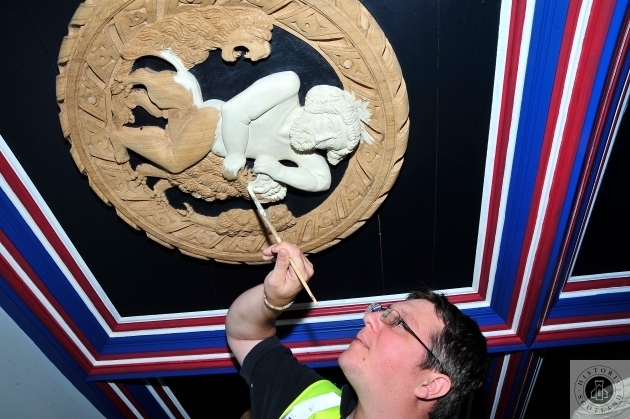 Linlithgow Palace may have had painted ceilings like this 16th century replica at Stirling Castle. |
Painted WallsLocation: Anteroom
Description:
The interior walls of the more important palace rooms were plastered to produce a smooth surface, which could then be painted. Plasterwork was an expensive and highly specialised craft in the 16th century. In 1504, 20 tons of plaster were bought from a French merchant at a cost of £50, which is about 4 years wages for a labourer. Paints and pigments were also very expensive. The building accounts for Linlithgow in 1434 record the enormous sum of £37 16s for colours for Mathew, the King's painter.
The plastered walls of the Anteroom have been decorated with mid 16th century Italian designs. They are based on wall paintings from the Palazzo Ducale in Mantua, Italy. Flowers, leaves and tendrils wind round a central reed. We don't know how this room was decorated in 1567. Mary Queen of Scots spent many years in the royal palaces of France where he would have seen similar designs. These continental designs are the sort of decorative ideas that Mary may have brought back with her from France. Teleport to the Outer Hall to see some more painted walls. |
|
Related links: Meet the French and Scottish artists who have recreated the fabulous Renaissance interiors of the palace of James V at Stirling Castle. The rooms at Linlithgow Palace would have looked similar to these recreated rooms at Stirling Castle. | |